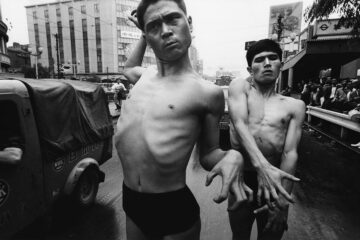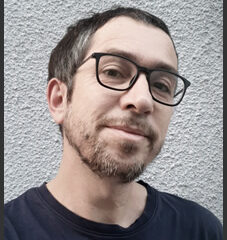In this episode Romina Achatz is in conversation with Sylvain Souklaye, a Brooklyn-based French multimodal artist who is working at the intersection of live performance, sound art, performative installation and social research. He is interested in sampling intimacies about people who don’t belong to a determinate identity, gender, class, colour or nationality.
After a short introduction the episode starts with 2 poems. After the poetry Sylvain talks about his life and career paths. The conversation deals with the questions: What is intimacy for you? What is your definition of Epigenetic?
Further Information: www.sylvainsouklaye.com/
Manifesto: „Sylvain Souklaye explores collective intimacies and epigenetic memories as a living language and the body as the last remaining proof. He questions the “Safe Space” while history always has been a minefield for his ancestors. Are minds, souls and bodies broken by generations able to accept peace? To process healing? Or are pain and warfare the only way because nothing and nowhere is safe?
Sylvain Souklaye body of work is a continuous and brutal flow of freedom and rage, anger and pain, past and future embodied into a collective moment. His body language gives a natural rhythm to a mother tongue of an odd but primal togetherness.
It becomes one movement in which the audience swims or sinks.
It becomes an epiphany and an external exchange between Souklaye and the audience. With Sylvain Souklaye’s practice, passive or voyeuristic people have to take a stand because History will not be kind with “Safe spacers”. For him, the audience must be accountable.
BUT
But what about Now and Then? They are the continuation of denunciation and a reconciliation process.
With the NOW Sylvain Souklaye documents the casual and disconnected barbary as endless storage information becomes the most efficient form of amnesia. With the THEN he investigates, warns, theorises our automated civilization and the extinction of empathy.
Sylvain Souklaye offers his mind, soul, body and the unsettling space with the audience and makes them the new carrier of his epigenetic history. It is not a social, gender or skin colour epigenetic.”






















